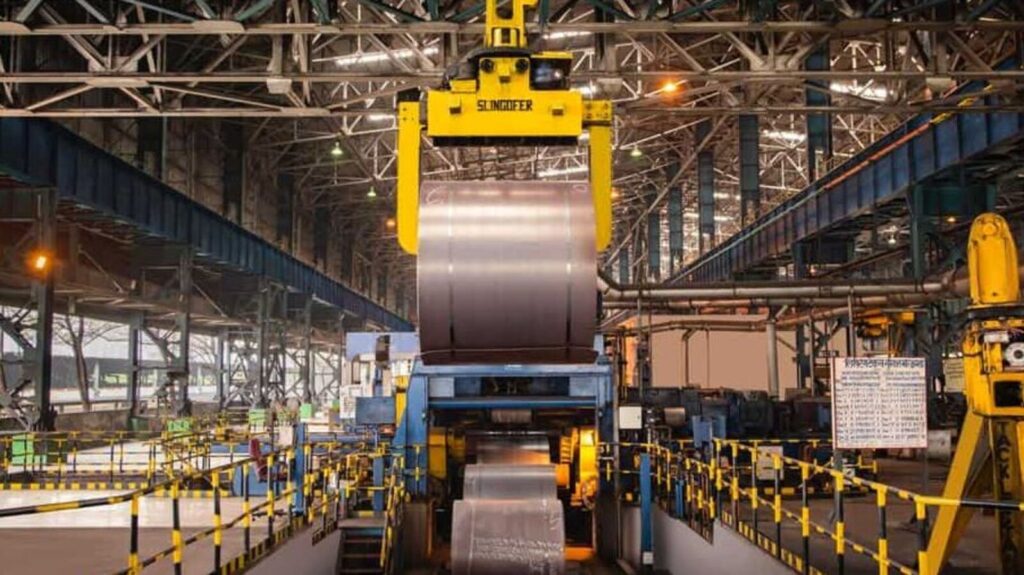India to Implement 12% Steel Import Tariff: A Strategic Move for Industrial Resilience


In a bold economic maneuver, the Indian government has announced the imposition of a 12% import tariff on all finished steel products, a move aimed at revitalizing the domestic steel industry and countering the dumping of cheap steel into the Indian market. The decision, which takes immediate effect, has sparked both applause and concern across industrial and global trade sectors.
The Ministry of Commerce and Industry cited a sharp increase in steel imports, particularly from China, Vietnam, and South Korea, as the primary reason behind the tariff. Imported steel, often priced below the cost of production, has been undercutting domestic suppliers, threatening their viability and long-term competitiveness.
“The tariff is a necessary safeguard to protect our industry, jobs, and national economic security,” said Commerce Minister Piyush Goyal. He emphasized the move as part of the broader ‘Aatmanirbhar Bharat’ (Self-Reliant India) initiative.
Over the past year, India imported over 7 million tonnes of finished steel—an increase of 25% year-on-year. With global overcapacity and slowing demand in major economies, exporters have increasingly targeted India’s growing market, leading to an oversupply and depressed prices.
The response from India’s steel industry has been overwhelmingly positive. Giants like Tata Steel, JSW Steel, and SAIL welcomed the measure, stating it would improve their capacity utilization and profitability.
“We’ve been operating at 70-75% of our capacity, and this tariff could push that above 90%,” said a senior executive from JSW. “It will also allow us to reinvest in modernization and green steel technologies.”
However, manufacturers who depend on steel as raw material—such as those in the automotive, construction, and appliance sectors—have expressed concerns about a potential rise in input costs. Some warned that this could make Indian exports less competitive globally.
India’s decision may face scrutiny from the World Trade Organization (WTO), especially if exporting nations choose to file a complaint. However, India maintains that the move is consistent with WTO norms, citing the need to prevent “injury” to domestic industry.
China, the world’s largest steel exporter, has already expressed disappointment, urging India to reconsider. Meanwhile, analysts expect other nations like Japan and South Korea to initiate diplomatic talks to negotiate exemptions or bilateral adjustments.
Economists suggest the move could help reduce India’s trade deficit in the long run. In FY2024-25, India’s trade deficit stood at $275 billion, with steel imports forming a notable part. The tariff could also incentivize more domestic mining of iron ore and investment in value-added steel production.
At the same time, inflationary pressures could rise slightly in the short term, especially in infrastructure projects that depend on affordable steel. The government has indicated it will monitor price movements and adjust public procurement policies accordingly.
The steel tariff aligns with India’s National Steel Policy (NSP) 2017, which aims to increase production capacity to 300 million tonnes by 2030. The government is also pushing for a transition to green steel, encouraging companies to reduce carbon emissions through renewable energy and hydrogen use.
Furthermore, this tariff is being viewed as a signal to global markets that India is prepared to defend its strategic sectors with bold interventionist policies, akin to recent moves in semiconductors, electronics, and renewable energy.
While the steel tariff may stir short-term disruption and potential diplomatic pushback, it’s a clear assertion of India’s industrial policy agenda. The government seems ready to recalibrate trade policy in service of national manufacturing strength and long-term resilience.
As steel forms the backbone of infrastructure, defense, and mobility, protecting its ecosystem may indeed be a strategic necessity in an increasingly competitive and uncertain global landscape.